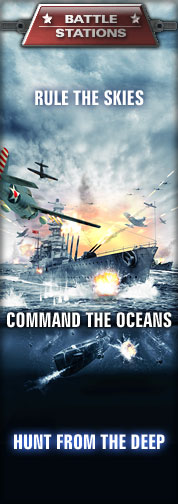With the shutdown of GameSpy, these pages are no longer relevant. They have been preserved for historical purposes.
- This article is about Coral Sea as it appears in multiplayer. You may be looking for the single player campaign mission of the same name.

American Objectives
- Sink the Shōkaku and the Zuikaku
- One of the US key units - the Yorktown and the Lexington - must survive
Japanese Objectives
- Sink the Yorktown and the Lexington
- One of the Japanese key units - the Shōkaku and the Zuikaku - must survive
Here, the Japanese and the Americans are for all intents and purposes, on exactly equal grounds. Therefore, the tactics that can be used for one side can be used for the other.
There is nowhere to hide in Coral Sea, so only good seamanship and piloting skills will determine the victor. The last carriers standing wins the match, so both sides should start the match by moving them.
Player Slots[edit]
American Slots
- Lexington (CV) - Lexington
Fletcher (DD) - Fletcher - Yorktown (CV) - Yorktown
Fletcher (DD) - Fletcher - Fletcher (DD) - Morris
Atlanta (CL) - Atlanta
Narwhal (SS) - S-35 - Fletcher (DD) - Sims
Northampton (CA) - Northampton
Narwhal (SS) - S-34
Japanese Slots
- Sōryū (CV) - Shōkaku
Fubuki (DD) - Akebono - Sōryū (CV) - Zuikaku
Fubuki (DD) - Ushio - Kuma (CL) - Kiso
Fubuki (DD) - Fubuki
Type B (SS) - I-26 - Takao (CA) - Maya
Fubuki (DD) - Sanazami
Type B (SS) - I-25
American Strategy[edit]

The Americans have slightly more naval firepower than the Japanese since their light cruisers are considerably better than the Japanese Kuma-class, but beware of the Maya - she is the deadliest adversary you will face on this map, so you're going to want to take care of her quickly.
Start the match by either moving the carriers or staying put. The fleet absolutely must move with the carriers - if the fleet splits up, you will lose for sure. Put up fighters until your ships have air superiority over the area - then drop in a few bombers. Alternatively you can have fighters put up a distraction for the enemy fighters while your bombers drop their ordnance. This often works in 1v1 matches.

The submarines, meanwhile, should make their way towards the enemy fleet. Surface while you can, since the enemy has a lot of destroyers, you'll be underwater until you get really close to a target. Subs should always pick a nice, juicy target - the Maya is a good choice, but the Shōkaku or Zuikaku is better. It will take a lot of torpedoes to sink either ship, but if you can damage them sufficiently, you just might turn the tide of battle for later. Don't hesitate to crash dive to depth level 4 to evade attacks. Damage there far outweighs being smacked by air-dropped depth charges.
On the other hand, always beware of enemy submarines. Good submariners will crash dive to depth level 4 to evade attacks, and destroyers are too slow to target them. Air-dropped depth charges, therefore, is the way to go. Always use Dauntlesses for anti-submarine duty, as they carry two charges versus the Avenger's one. Also keep track of your submarine kills - if you sink both enemy subs, you can land all your sub hunters.
Unlike the real Battle of Coral Sea and the Battle of Coral Sea single player, it is highly likely you'll engage in some surface-to-surface combat here, so be prepared to fight on sea as well as in the air.
An interesting manoeuvre that both sides use is to gather up all the ships and simply wait for the enemy to come. The enemy won't suspect much, but it is often a trap, as fighting on home turf gives you an advantage over the enemy. It also decreases the amount of time bombers have to fly in order to fight the enemy. Always scout out the enemy fleet beforehand - if they're massing up and battening down the hatches, don't go to them - make them come to you.
Japanese Strategy[edit]

The Japanese have identical units here, so all the American strategies apply here too.
The Japanese have a slight firepower disadvantage here as the Kuma-class cruiser is sub-par compared to the American light cruisers. Its anti-air capability is dismal, but what it excels in is surface-to-surface engagements against particularly enemy destroyers. Don't send it up against the cruisers - send it up against the Fletchers. Against the American cruisers, your best bet is the Maya and a lot of torpedo bombers, coupled with sheer skill.

As with the Americans, have your subs scout out the area and have them sink what they can or even coordinate them with your surface ships. If you manage to sink the enemy cruisers with your subs, you can seriously pave the way for a future victory. Hitting the carriers is also a possibility, but you have a slight disadvantage here, so if you sink the cruisers you can hit the carriers later.
An interesting manoeuvre that both sides use is to gather up all the ships and simply wait for the enemy to come. The enemy won't suspect much, but it is often a trap, as fighting on home turf gives you an advantage over the enemy. It also decreases the amount of time bombers have to fly in order to fight the enemy. Always scout out the enemy fleet beforehand - if they're massing up and battening down the hatches, don't go to them - make them come to you.
